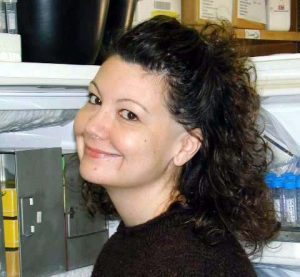Research in the Dept. of Biochemistry and Biophysics at the University of North Carolina-Chapel Hill, by Dr. Julia Brittain, Research Assitant Professor and Dr. Leslie Parise, Professor and Chair have shown that blood from sickle cell patients also contains clumps, or aggregates, of red and white blood cells that may contribute to the blockages.

It’s long been known that patients with sickle cell disease have malformed, “sickle-shaped” red blood cells – which are normally disc-shaped – that can cause sudden painful episodes when they block small blood vessels.
Now, researchers at the University of North Carolina at Chapel Hill School of Medicine have shown that blood from sickle cell patients also contains clumps, or aggregates, of red and white blood cells that may contribute to the blockages.
The study, published on-line April 18 in the British Journal of Haematology, marks the first time that aggregates made up of red blood cells and white blood cells have been found in whole blood from sickle cell patients. The study also shows how the red and white blood cells adhere to one another: the interaction is mediated by a particular protein, integrin alpha four beta one.
First author Julia E. Brittain, Ph.D., a research assistant professor in the medical school’s department of biochemistry and biophysics, said further study could lead to new treatments for the disease. “If the blockages are caused by these chunks of aggregates that are circulating in the blood, and we know how the aggregates are sticking together, we potentially could design drugs to disrupt the aggregates so that they pass through the blood vessel more freely,” she said.
Normal red blood cells don’t interact with white blood cells. But Brittain first showed in lab tests with isolated cells that young red blood cells (reticulocytes) would interact with white blood cells and form aggregates with them. Then, she looked for such clumps in blood samples from 14 people with sickle cell disease. All the patient samples studied had clumps, though some had only a few, while others had thousands. She didn’t see clumps in samples from patients without sickle cell disease.
Brittain said other researchers may have disrupted the aggregates because blood collection tubes usually contain an anticoagulant that ties up calcium, which often plays a role in cell adhesion. She saw the aggregates only when she used an anticoagulant that doesn’t remove calcium.
Brittain and her colleagues plan further study of the phenomenon, including the conditions that might determine the number of aggregates in the blood, and whether they are affected by the drug hydroxurea, which is commonly used to treat sickle cell disease.
In addition to Brittain, other authors of the study are: Leslie V. Parise, Ph.D., department chair and professor of biochemistry and biophysics; Dr. Kenneth I. Ataga, assistant professor of medicine; Dr. Eugene P. Orringer, professor of medicine; and Dr. Christine M. Knoll, a fellow in pediatric hematology and oncology.
Support for the research came from National Heart, Lung, and Blood Institute, a component of the National Institutes of Health and the General Clinical Research Center at UNC.
The study can be found at: http://www.blackwell-synergy.com
Note:Brittain can be reached at (919) 962-1058 or julia_brittain@med.unc.edujulia_brittain@med.unc.edu julia_brittain@med.unc.eduand Parise can be reached at (919) 966-2238 or parise@med.unc.edu.parise@med.unc.edu. parise@med.unc.edu.
School of Medicine contact:Leslie Lang, (919) 843-9687, llang@med.unc.edullang@med.unc.edu llang@med.unc.edu
News Services contact:Patric Lane, (919) 962-8596, patric_lane@unc.edupatric_lane@unc.edu patric_lane@unc.edu
